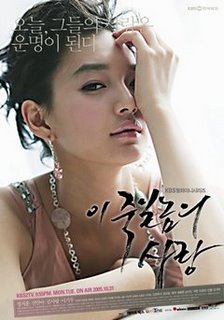Power Line
 Wednesday was a sad day. Contractors for Seattle City Light showed up, power equipment at the ready, to prune the locust trees in my front yard. I knew they were coming. All up and down our block, they’d distributed letters informing residents of the pending butchery.
Wednesday was a sad day. Contractors for Seattle City Light showed up, power equipment at the ready, to prune the locust trees in my front yard. I knew they were coming. All up and down our block, they’d distributed letters informing residents of the pending butchery.It was my fault for bringing the trees to City Light’s attention. This summer I heard a strange crackling sound outside. I searched for the source and discovered a small blaze sputtering high up among my tree branches where the power line touched some of the smaller twigs. Uncertain of what to do, I simply stood and gaped at the fire for a while. A stiff breeze pushed leaflets against the wire, producing sparks and a brief spurt of flame, then stems and twigs would smolder, sending a thin plume of smoke into the sky. Eventually, it occurred to me I needed to call the light company. I didn’t want to be responsible for burning down an entire block, not to mention my own home.
City Light responded promptly. Workers arrived within the hour to trim the branches that were making contact with the power line. Only a few cuts were needed. It didn’t look bad at all, and the fire was out. They told me then they’d have to return later to prune the trees more extensively. I should have been prepared, but I wasn’t.
I love trees. I have an emotional attachment to them as though they were pets or children. When we moved into this house, one set of neighbors asked hopefully if we were going to cut down the trees so everyone could see our beautiful home. They were tired of dealing with the thousands of tiny yellow leaves that drift down all summer then come down in earnest in the fall. Poor things, they so got the wrong new neighbors. I would never remove a tree unless there was an imminent threat of it crashing down on a roof. A few years later, my husband and I did agree to share the cost of pruning the trees that grow along the neighbor’s property line and overhang their yard. Legally, they could cut those branches without our permission, but they told us they had hired a tree pruning company, and we wanted to be good neighbors, so we offered to pay half the fee. I paid $350 for a serious sobbing session.
And that’s what I did Wednesday morning--sob. The Seattle City Light contractors knocked on our door early in the morning and politely informed us we needed to move our car to make sure no limbs fell on it. I resolutely ignored the whining of the saws and grinders for some time, but finally, I had to look. I let out a shriek and burst into tears. They were cutting so much more than I had anticipated.
I went outside, found the site supervisor and told him they were removing way more of the trees than I’d expected and that I was extremely upset. Not that I needed to add that last bit as my eyes were watery, my nose was running and my skin was blotchy. I’m sure he thought I was a fool, but he courteously explained that the law required the trees be pruned a minimum of ten feet from the main power line, which carries some humongous number of volts, and five feet from a lesser line. He said the law would have to be changed for them to make their cuts any differently. Then he tried to cheer me up by saying that next spring the trees would leaf out and look much better. I wasn’t cheered.
At the end of the workday, groups of neighbors gathered to look down our block and discuss the changes. A gorgeous gigantic maple down the street from my house was also shaved halfway down one side. Its owner was unhappy but said the pruners were only doing their job. One neighbor said it was the worst thing she’d ever seen. She has a friend whose pine trees were cut down right to the ground. Thank goodness they didn’t do that to my locusts. She suggested I e-mail Seattle City Light and complain. Better yet, I should contact our three local TV stations.
I thought about doing just that, but the thing is, the trees should never have been planted under power lines in the first place. Locusts grow from 30 to 70 feet tall. Our trees towered over the power lines when we moved here. According to the Seattle City Light Web site, "…interfering tree limbs and falling trees or branches are the No. 1 cause of power outages in the Seattle metropolitan area." They offer a free copy of The Right Tree Book, or you can download an Adobe copy from their site. We were probably lucky our trees escaped unscathed for as long as they did.
But couldn’t the contractors have carried out their surgery in a more esthetically pleasing fashion? City Light’s Web site claims, "Certified Power Line Clearance contractors under the direction of Seattle City Light employees perform the trimming. Seattle City Light uses pruning standards approved by the International Society of Arboriculture which meet safety requirements of both federal and state laws." I’m not convinced, but I have to admit ten feet is a lot of tree to trim. Maybe there was no way to do it any better.
Of course, anyone who knows the locust is giggling hysterically right now. Locust is not a Pacific Northwest native. I’ve heard it called a weed tree and an alley cat tree. It is not generally prized. Both the blossoms (which, at least, do smell wonderful) and the leaves are messy. You find it growing in abandoned lots and poorer neighborhoods. But I don’t care. I love them. And I’m going to mourn the hunks of them that we’ve lost for a long time.





